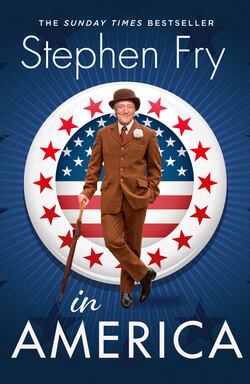Читать книгу Stephen Fry in America - Stephen Fry - Страница 10
Down East
ОглавлениеThe most obvious physical features of the Down East scenery are forest and ocean. But then this is true of the whole state. Mainers will tell you that if you were to straighten every wrinkle and crinkle of their coastline it would stretch out wider than the whole breadth of the United States – into three and half thousand miles of inlets, creeks, coves, bays, promontories, spits, sounds and headlands. As for the land – well, there is only ten per cent of Maine that is not forest and much of that is lake and river. Water and wood, then – water and wood everywhere.
They will also tell you that Eastport was once famed for its sardine-packing industry. ‘Fame’ is an odd thing in America. There cannot be many towns with a population of more than ten thousand that do not make some claim to it. It usually comes in the form of a burger: ‘Snucksville, NC – home of the world famous Snuckyburger’, a dish that will never have been heard of more than five miles from its originating diner. But ‘back in the day’ Eastport genuinely was famous for sardines. An industry, that, if the Eastporters are to be believed, was effectively wrecked by The Most Trusted Man In America.
The doyen of news anchors, Walter ‘and that’s the way it is’ Cronkite liked apparently to sail in the waters around Eastport and was disturbed one day to see a film of oil all over the water, staining the trim paintwork of his yacht. He made complaints. A government agency looked at the fish oil coming from the cannery and imposed regulations so strict that the economic viability of the business was compromised and the industry left Eastport for good. That at least is the story I was told as gospel by many Eastporters. Certainly the deserted shells of the old canneries still brood over the harbour awaiting their full regeneration. The body of water that dominates the harbour is Passamaquoddy Bay and the land on the other side is, confusingly, Canada. A line straight down the middle of the bay forms the border between the two countries.
Before the British, before the French, before any Europeans came to Maine there were the tribesmen, the ‘First Nations’ or Native Americans, as I expected I should have to be very careful to call them. Actually the word ‘Indian’ seems inoffensive to the tribespeople I speak to around town. The federal agency is still called The Bureau of Indian Affairs and there are Indian Creeks and Indian Roads and Indian Rivers everywhere. It is true that the word was wrongly applied to the native tribes by Columbus and his settlers who thought they had landed in India. But the word stuck, misnomer or not. Sometimes political correctness exists more in the furious minds of its enemies than in reality, which gets on with compromise and common sense without too much hysteria.
Anyway, the indigenous peoples of the Maine/New Brunswick area are the Passamaquoddy, a European mangling of their original name which meant something like ‘the people who live quite close to pollock and spear them a lot from small boats’, which may not be a snappy title for a tribe but can hardly be faulted as a piece of self-description.
My first full day in Eastport will see me on Passamaquoddy Bay, not spearing pollock, but hunting a local delicacy prized around the world.
